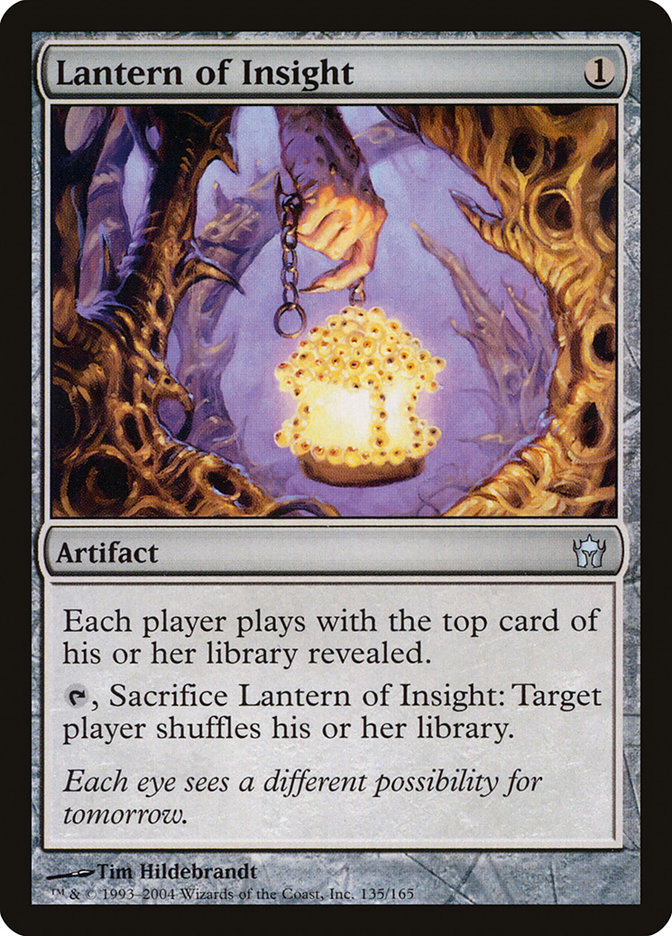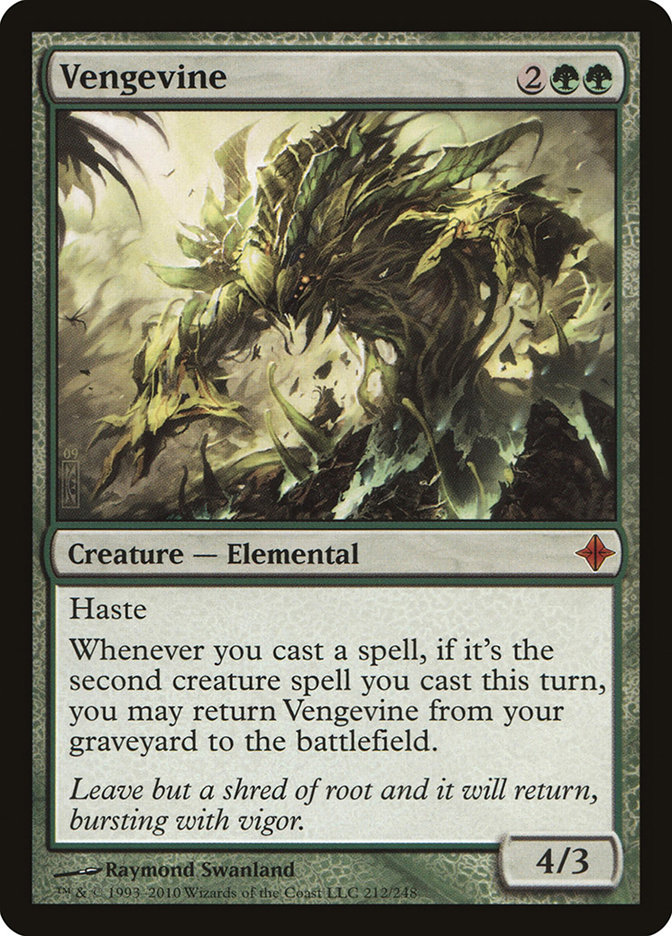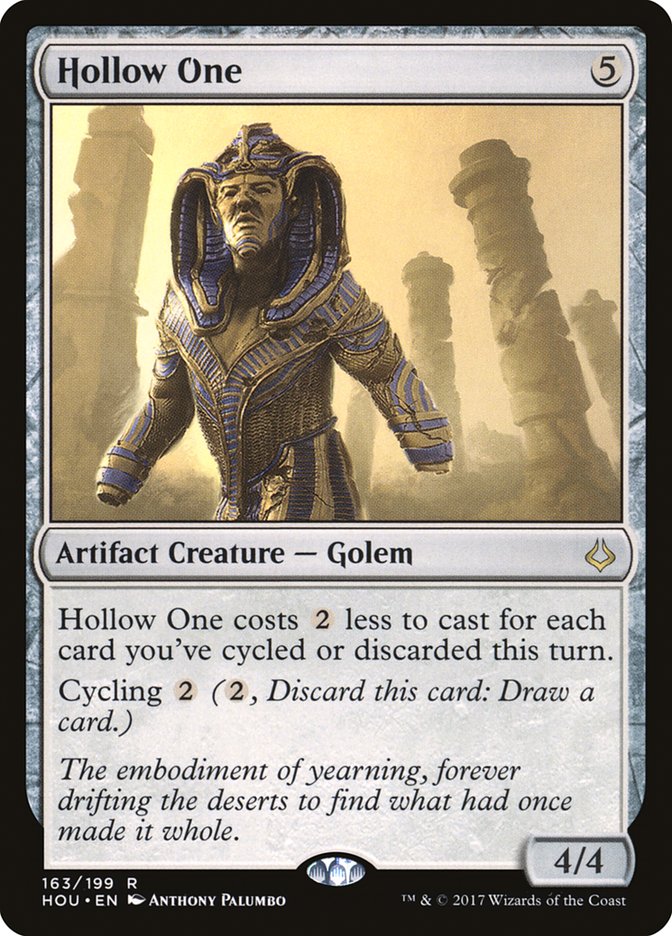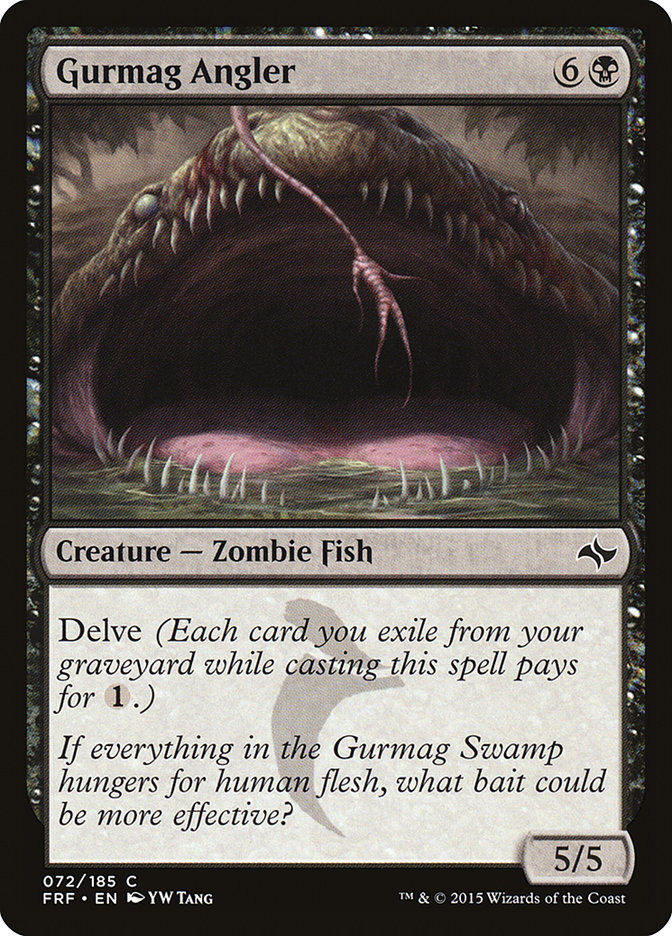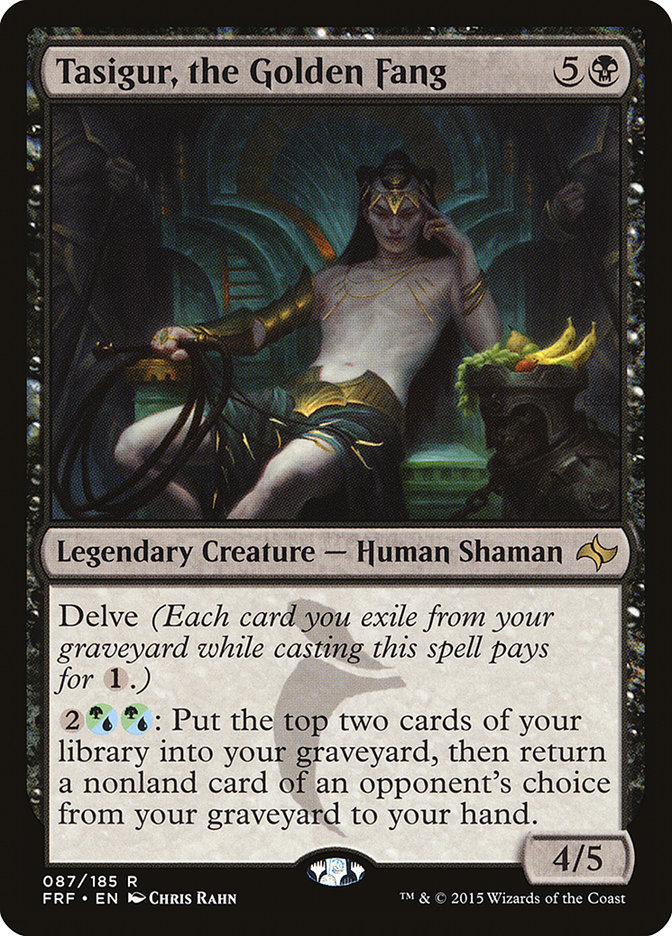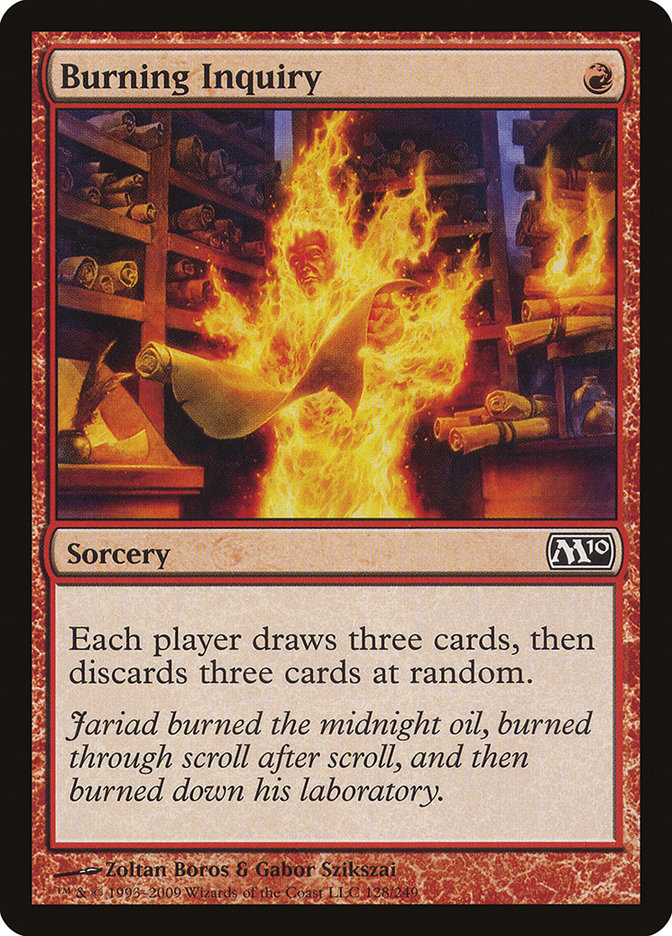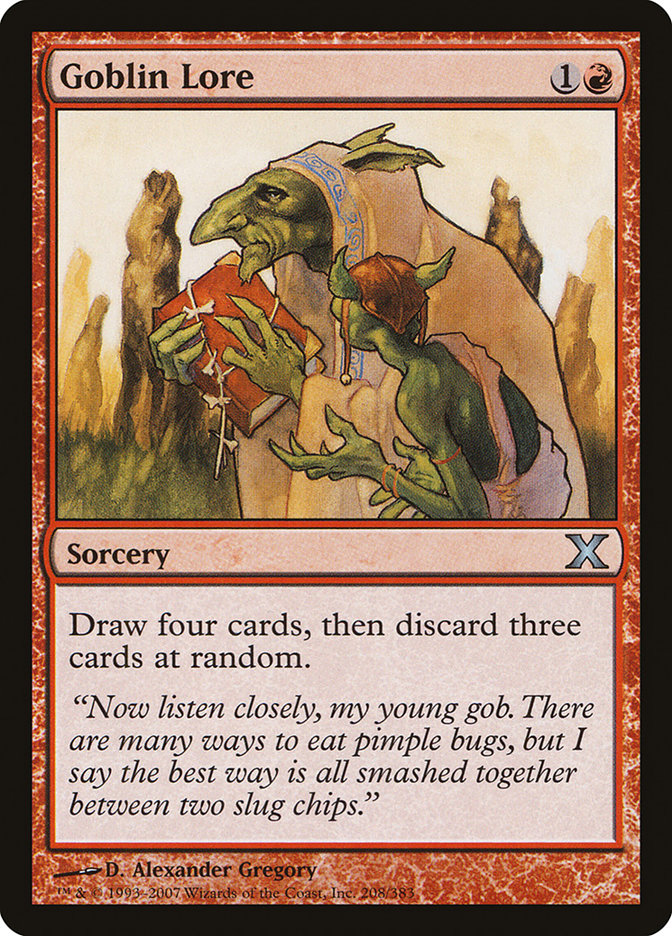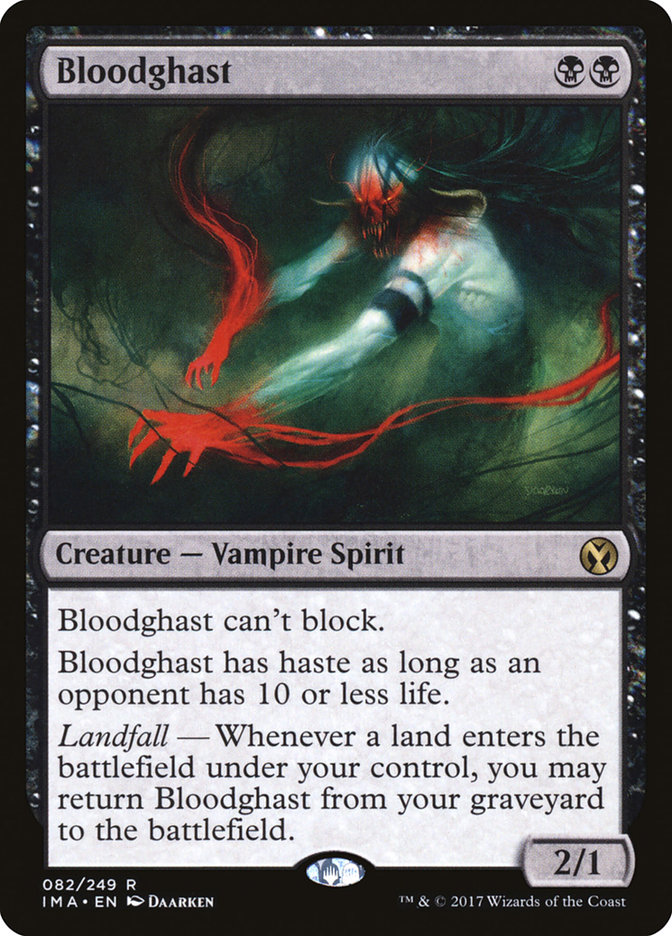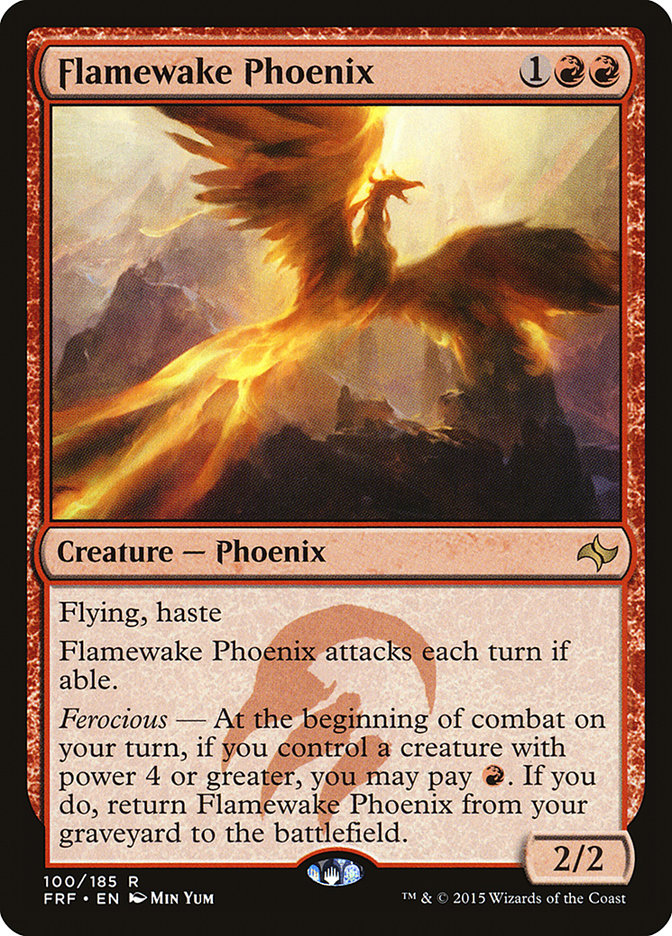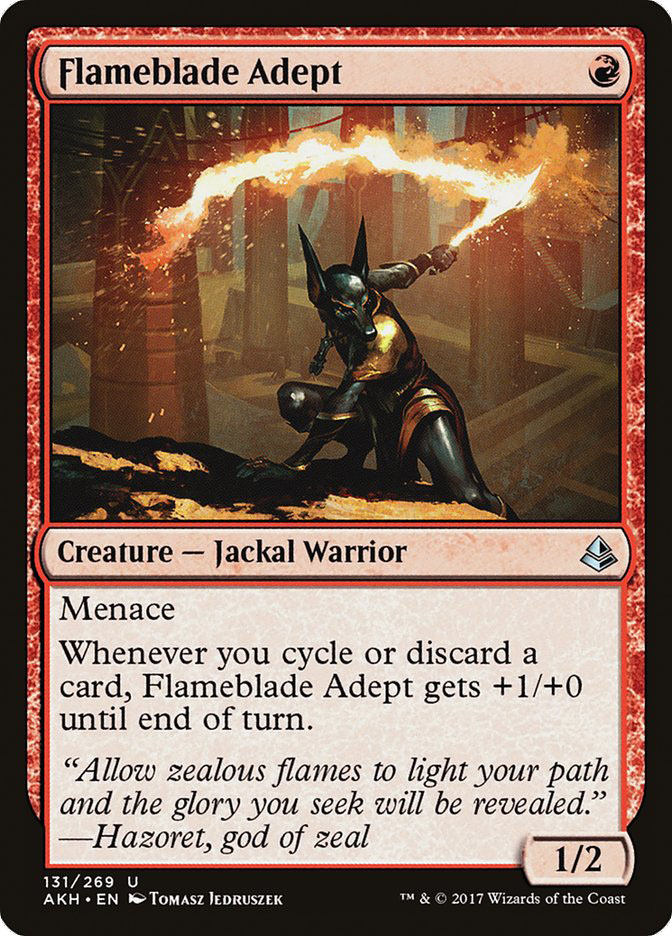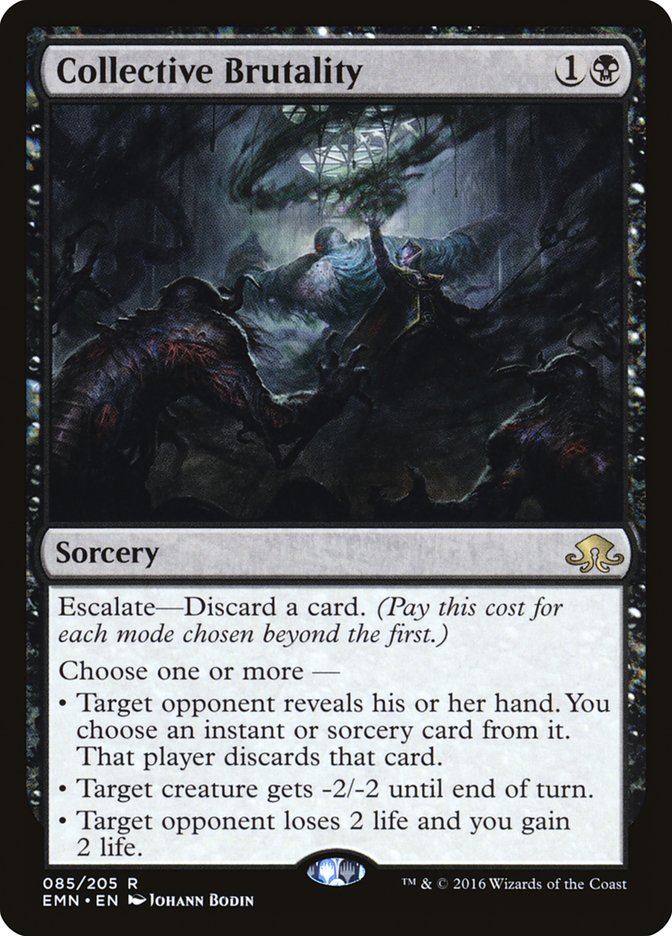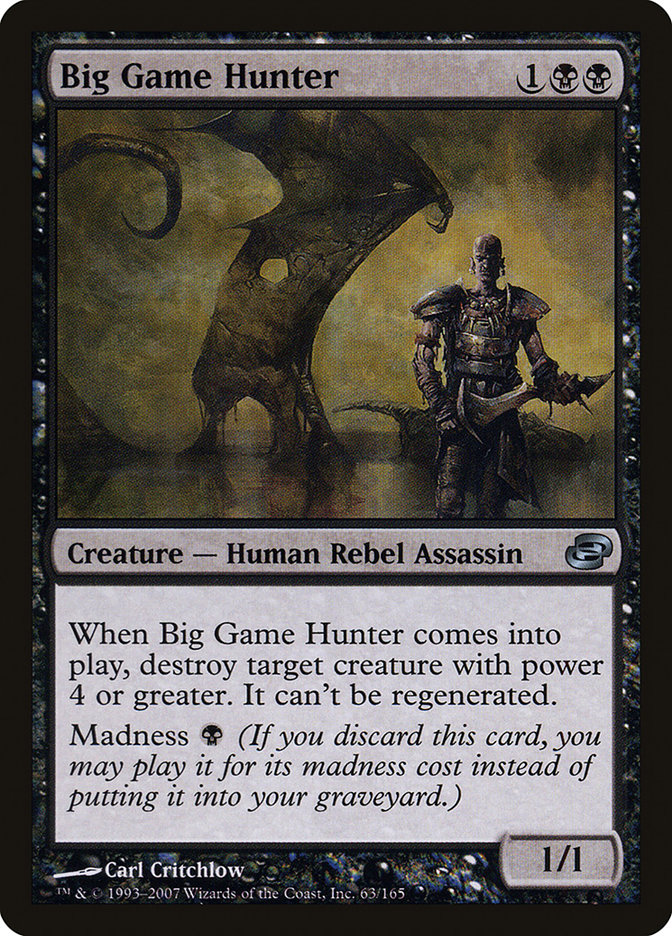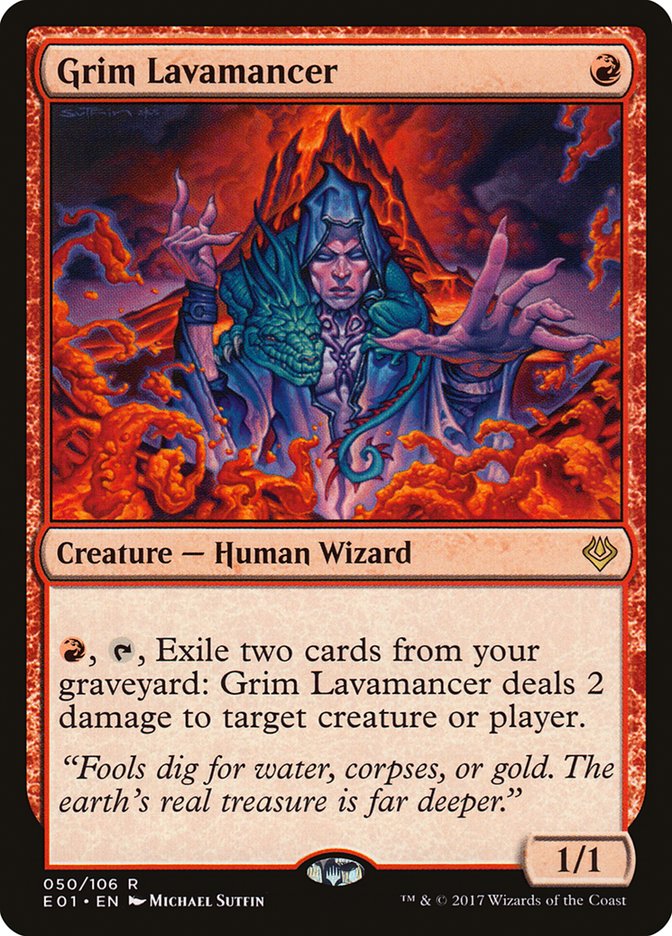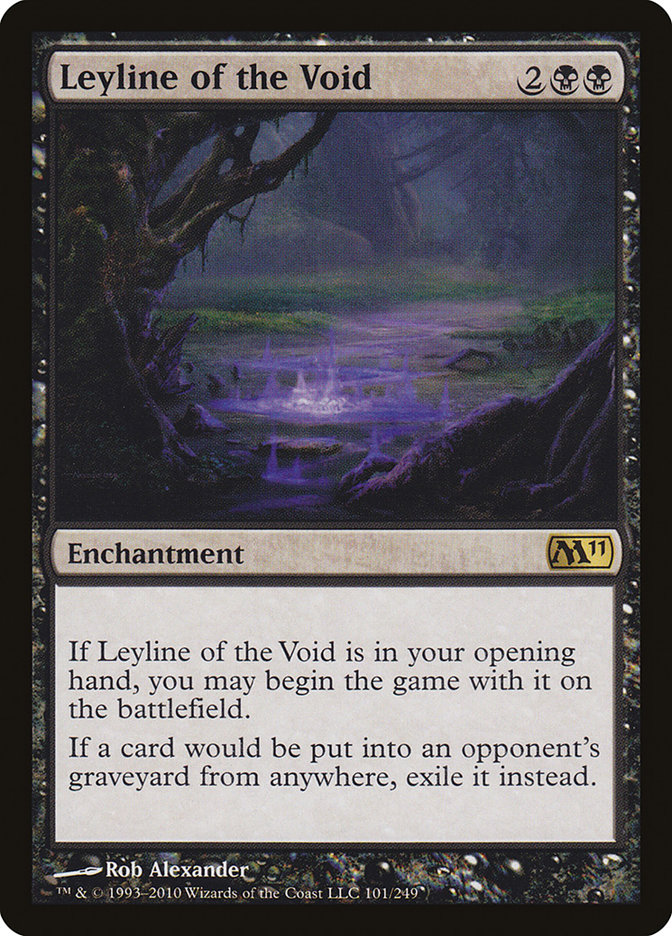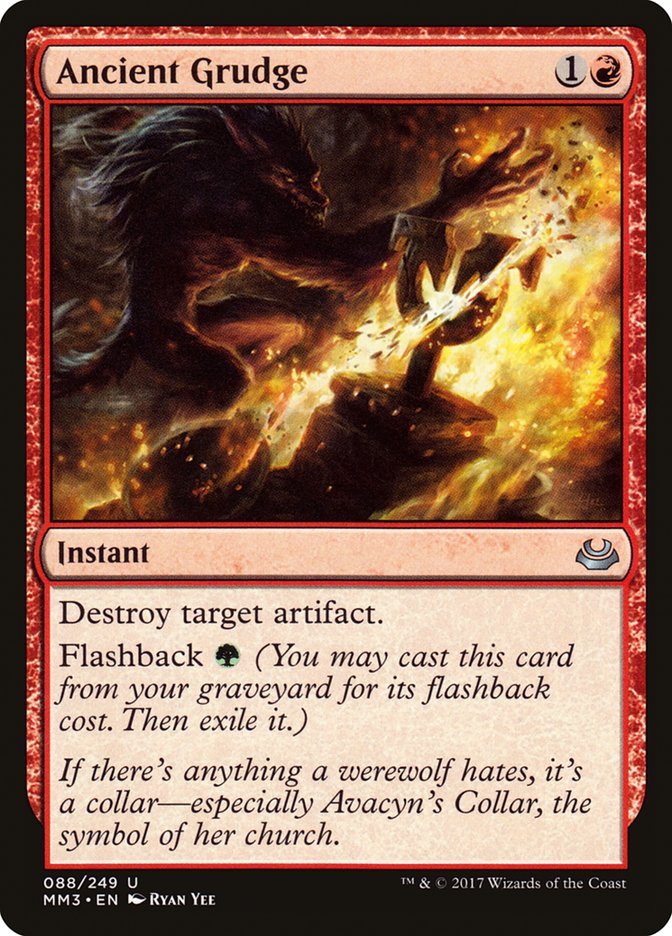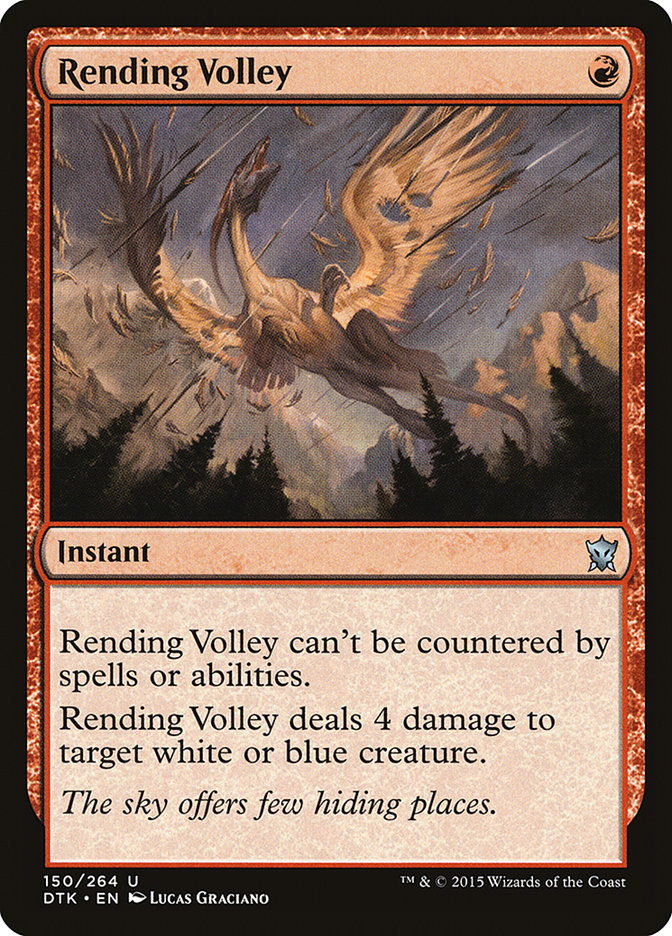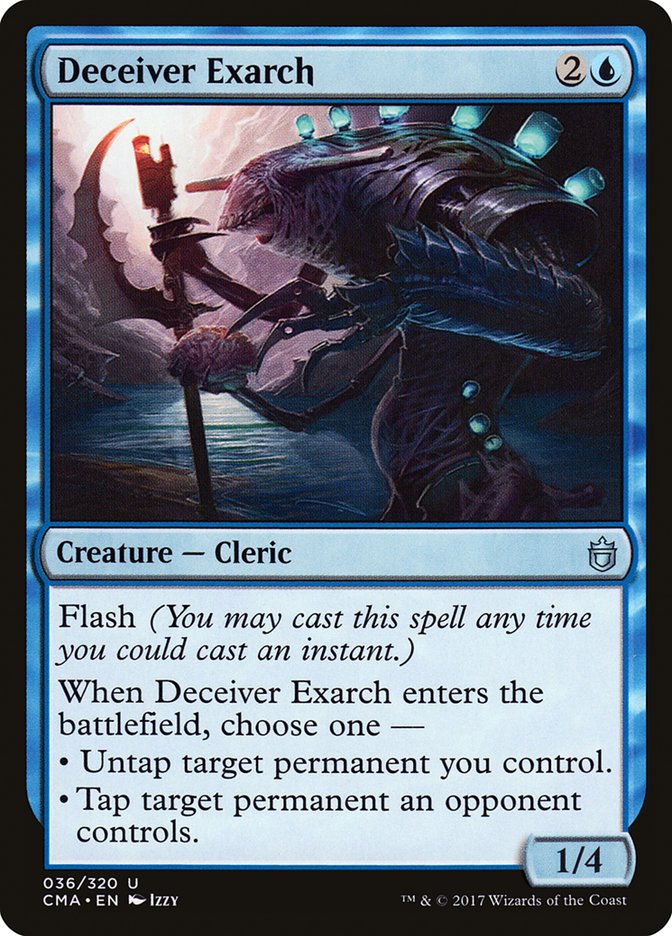The last time we had a Modern Pro Tour, Eldrazi ruled the roost. Eye of Ugin being legal with the medium-costed Eldrazi out of Battle for Zendikar and Oath of the Gatewatch made for some quick games, and the colorless tribe effortlessly chewed through the tournament. Because Eldrazi nearly ruined the format, and with players on the professional circuit complaining about how it lacked skill to perform well in the format, Wizards of the Coast decided to axe Modern from the Pro Tour in favor of Standard.
Well, with a handful of bannings and Standard turnout lacking, Wizards of the Coast ultimately decided it would be a good idea, both for viewership and to take some of the pressure off Standard, to reinstate Modern as a Pro Tour format. Personally, I’m very glad that was the case. I like Modern a lot, even if some games or matchups don’t really feel “fair.” I like trying new strategies, and I also very much enjoy trying to figure out the puzzle of the format even before the tournament begins.
At the Pro Tour, we saw a variety of archetypes, ranging from B/G/x Midrange all the way down to Lantern and B/R Hollow One. But for the most part, these were all decks we’ve seen before. Aside from Ken Yukuhiro’s B/R Hollow One deck, nothing really stood out as something we haven’t seen consistently. The Top 8 had the normal fare of B/G/x Midrange, Death’s Shadow, Humans, Lantern, and a little spice of Mardu Pyromancer tossed in. Overall, this Pro Tour was a big win for Wizards of the Coast, Modern, and Magic as a whole.
But despite the variety in the format, people are still clamoring for bans. I don’t want to get bogged down on the topic, but not every deck deserves to get knocked out for winning a tournament. Yes, Lantern can be frustrating to play against and to watch, but I think it gets a bad rap. It’s no more annoying than Blood Moon or Chalice of the Void, given the right circumstances. And on top of that, like every other Modern deck, it has a few nightmare matchups from decks that see regular play.
Even though Modern is like having a thousand different dangerous animals all caged together, it seems mostly balanced at the moment. Most decks have the tools to interact if they want to. Most decks have ways to win virtually any matchup. And above all else, you get to play just about whatever you want. And people love it. So shut up about it.
With that said, there are some details from the Pro Tour that we need to go over. Specifically, there are two decks that I think deserve a lot more recognition, but I’m sure Gerry Thompson will cover one of them (congrats, buddy!), so I’ll just go over the sweet B/R Hollow One deck I mentioned before.
Creatures (24)
- 4 Street Wraith
- 4 Bloodghast
- 3 Gurmag Angler
- 4 Flamewake Phoenix
- 1 Tasigur, the Golden Fang
- 4 Flameblade Adept
- 4 Hollow One
Lands (18)
Spells (18)

I was quite surprised to see zero copies of Vengevine in this deck. But if I’m being honest with myself, Vengevine was the least reliable part of the original version of this deck. Of course, saying something isn’t reliable in a Burning Inquiry / Goblin Lore deck sounds ridiculous, but it’s just true. While you could put Vengevine into the graveyard pretty easily, getting it back was anything but. You needed to make sure you hit your first three or so land drops, and you needed enough creatures to cast afterward to bring them back.
Vengevine also made cards like Gurmag Angler a little more difficult to cast because you didn’t always have enough cards to delve, but that was way back when I was using Cathartic Reunion and fewer overall discard outlets. This version of the deck looks way sweeter, both in execution and power level, even if it is a bit erratic at times. I think Bloodghast and Flamewake Phoenix are both more consistent and function on a similar wavelength. Both are easier to cast and reasonable threats without having to jump through a lot of hoops. And while Vengevine hits hard, I’m more than fine cutting it from the deck completely.
The Maindeck
The start of the deck, and the sole reason to play both Burning Inquiry and Goblin Lore, Hollow One is the card that gives you your most explosive draws. A 4/4 creature on the first turn isn’t always going to end the game on the spot, but two of them should be more than adequate.
Personally, I’m a fan of playing four copies of Gurmag Angler here, but I assume the only reason to play Tasigur, the Golden Fang is because it costs one less card to delve. And, in some situations (especially when you draw two of them), that one card could make all the difference. I’m willing to give Yukuhiro the benefit of the doubt.
Delve creatures seem like a no-brainer here. They’re big and come down pretty quickly with all your looting effects in the early game, and they’re big enough to turn on Flamewake Phoenix, so that’s a plus. While you don’t have a lot of discard spells to take away the spot removal from your opponent that could potentially kill these big creatures, this deck does a great job of overloading your opponent’s removal. If they have to deal with Hollow One, Gurmag Angler, Bloodghast, and Flamewake Phoenix, they will rarely draw enough copies of Path to Exile or whatever to kill them all. That means at least one, and probably more, will make it through to start attacking. And since your creatures are all relatively cheap (or free), you should be able to put more pressure on the battlefield than they’re able to deal with.
I always wanted to try these cards in the archetype, but never had the guts to pull the trigger. Randomly discarding has never been something I’ve wanted to do, but discarding three is just the right number to turn on Hollow One. I suppose I should have given them both a shot, because Yukihiro’s deck looked smooth as silk whenever it was on camera.
I cannot overstate how a first-turn Burning Inquiry can impact a game. In some scenarios, your opponent will lose on the spot if they discard all of their lands. In others, you just might discard all of your threats and be left with a handful of lands. But with Faithless Looting, Goblin Lore, and Burning Inquiry at the ready, having a handful of lands isn’t that big of a deal. More than likely, you’ll be able to cash those excess useless resources out for something useful.
As we talked about a bit already, Bloodghast and Flamewake Phoenix act as your virtual Vengevines. While neither hits as hard, they both are significantly easier to return to the battlefield. You also don’t usually mind drawing them in multiples because of their low recursion cost. Against removal-heavy strategies, these cards will singlehandedly win games. Supreme Verdict won’t save the opponent. Lightning Bolt and Fatal Push are laughable. And both have haste when you’re trying to close the game.
In previous versions featuring Vengevine, Flameblade Adept eventually got cut. In those versions of the deck, you wanted to hold your one-drop creatures until the second or third turn so you could more easily bring back Vengevine. Awkwardly, Flameblade Adept is a card you want to cast before you start discarding stuff, so it didn’t really fit the bill. After figuring this out, I went a different route and tried building the deck around a Death’s Shadow shell, giving me more standalone threats.
Yukuhiro’s versions of the deck makes Flameblade Adept look bonkers. Not only can you put early pressure on an opponent, you get actively rewarded for playing stuff like Burning Inquiry and Goblin Lore. The more cards you discard, the bigger it gets. And it’s not all that easy to block! Menace is a highly underrated ability in Modern, and one that we don’t see all that often, but Flameblade Adept punches in fast and hard and makes defense virtually impossible for the opponent. I suspect this is one of the reasons why Yukuhiro opted to play a few interactive removal spells in Lightning Bolt and Collective Brutality. Killing an early blocker from the opponent might just seal the deal. And in a pinch, either can do the last few points of damage to win the game.
Reach (the concept, not the keyword) is an underrated part of Magic. Cards like Lightning Bolt and Collective Brutality serve a significant purpose in the early turns of a game, either buying you time or clearing out blockers, but also serve as a way to win a game that you failed to close with creatures. Most Modern decks have removal to kill your threats, so an early Hollow One or Gurmag Angler won’t always get the job done.
Decks built similarly to B/R Hollow One have traditionally been more threat-heavy and rely on those threats to function well with the support spells. Dredge and B/R Hollow One are very similar in what they’re trying to do, but they’re just slightly different on how they go about it. Dredge is a bit too reliant on the graveyard and is comically smashed to pieces by stuff like Leyline of the Void and Relic of Progenitus if they’re unable to draw an answer. And while B/R Hollow One still uses the graveyard quite a bit, it can still put out a ton of damage without using the graveyard at all. In a lot of these scenarios, having that little bit of extra reach via Lightning Bolt and Collective Brutality is very important.
The Sideboard
This was always one of my favorite sideboard cards for the Death’s Shadow version of the deck, but it isn’t nearly as easy to set up as you might think. In actuality, Death’s Shadow opponents can hit it with a discard spell before casting one of their big creatures. Even Thought-Knot Seer is relatively problematic because it exiles instead of discarding.
Big Game Hunter is not a card you want in your hand. It’s a card you want to draw after you’ve fallen behind. Sure, it can be sweet to clear out an opposing creature if they’re not attacking your hand, but those times are few and far between. And with cards like Burning Inquiry and Goblin Lore, drawing it later in the game isn’t all that difficult. The only downside is accidentally discarding it when it won’t be cast at an opportune time. And awkwardly, Big Game Hunter is a “must” ability and can target your creatures, so be careful when casting it if your opponent doesn’t have any targets on the battlefield!
For all the downsides of Big Game Hunter, I still like it in concept. It does one job, and it does it well, and it can be cast off Faithless Looting to offset the negative card advantage.
This card singlehandedly obliterates a lot of decks in Modern, including both Affinity and Humans. If you’re able to stick one on the first turn, the odds it dominates the game are very high. The later the game goes, the less likely it is to stem the bleeding, but I couldn’t think of another card I’d want more on the first turn against either of these decks.
Grim Lavamancer is another card that uses the graveyard, though, and is susceptible to losing value due to splash damage from your other graveyard-based cards. But the upside is definitely worth the investment. And if you’re taking out something like Bloodghast or Flamewake Phoenix for Grim Lavamancer, it makes a lot more sense. You don’t want to overload any of your draws with graveyard-related cards after sideboarding, since your opponent can really hurt you there.
At this point, any red deck should likely have some number of Blood Moons lying around. It just gives you too many free wins to leave on the sideline. Even if it just slows the opponent down by a turn or two, that’s really all you’re going to need in a deck as fast as this one. While I hate Blood Moon as a card, I am willing to use it for my own gain, and I refuse to feel bad about it.
This deck doesn’t mind clicking the mulligan button much, and Leyline of the Void is particularly strong in decks that can function off five or six cards in the opening hand. That’s yet another reason how Dredge and B/R Hollow One are similar, and why both are able to easily play Leyline of the Void over something like Nihil Spellbomb.
The biggest draw for Leyline of the Void over something like Nihil Spellbomb is that you don’t have to worry about your opponent rebuilding from the ground up. They’re stifled from the beginning. If you lead off with Leyline of the Void, they’re screwed unless they find a way to answer it, and they have to do it quickly. Your deck puts a lot of pressure on the opponent in the first few turns, which closes the window in which killing your Leyline of the Void will actually matter.
Plus, it’s a one-sided effect, so it doesn’t mess with your copies of Gurmag Angler and the like.
An easy splash, and one that I’d like to see more copies of going forward. With Yukuhiro getting demolished by Lantern in the Top 4 of the Pro Tour, having a few extra ways to interact with artifacts will be important moving forward. The extra splash means having a few more fetchlands over something like a fourth copy of Blackcleave Cliffs, but there is no substitute for Ancient Grudge.
Did I mention that I once splashed green in my Grixis Splinter Twin deck at a Pro Tour for three copies of Ancient Grudge? And also that it was great?
A few more ways to interact with creatures is never a bad thing in Modern. Decks featuring a ton of cheap creatures that create a snowball effect or assemble an arbitrarily large combo are the main reasons to play more removal, but I wouldn’t mind sideboarding into something resembling a control deck. Grim Lavamancer, along with Fatal Push and the other removal spells, will give creature-based decks fits.
A Few Notes
- This deck could function without Lightning Bolt.
Yeah, I know I talked a bit about reach and the importance of interaction, but going ballistic with a synergy-based linear deck can be important in the right metagame. In the right situation, something like Inquisition of Kozilek or Thoughtseize could end up being more valuable for a deck like this.
- The manabase isn’t perfect.
Splashing a third color is never easy, but I’d like to see a few more lands that won’t deal us damage. Burn might make a big comeback in the next few weeks thanks to its favorable matchup against Lantern. If that becomes the case, having one or two more lands that don’t deal you damage could be the difference between winning and losing a match to Burn.
- This deck is not for the faint of heart.
The first time you discard all your Hollow Ones to your own Burning Inquiry will be the moment you want to stop playing this deck. If you can handle the swings, you can handle playing a deck like this one. It isn’t often pretty, but this deck is powerful and persistent.
- Toy around with the sideboard.
No decklist is ever set in stone in Modern. Things change. Decks rise and fall. That means we can save space by cutting cards for matchups that may or may not exist anymore. Trust me, I know how hard it is to adapt. I kept seeing Rending Volley in people’s sideboard even after Splinter Twin was banned.
- Spin the wheel.
If you’re ever in a spot where you’re unsure if you want to save your Burning Inquiry or Goblin Lore until you have a Hollow One already in hand, just go for it. Obviously, this doesn’t apply if you can just cast Gurmag Angler or something similar, but don’t be afraid of discarding “good cards.” Just cast your spells and hope for the best. Your best draws are your explosive ones where you get an early Hollow One or combination of two or three creatures, and your best bet of achieving that goal is by casting your enabler cards. While it can be terrifying to discard at random, this is the deck you’ve decided to play. Embrace the madness!
- Don’t be afraid of sweepers.
Your deck is great at pulling back into the game after your opponent hits a reset button. A lot of your creatures survive Supreme Verdict in one way or another, and the ones that do die to Supreme Verdict will survive Anger of the Gods. Obviously, you should always use your best judgment, but you’d be a fool not to jam your entire hand onto the battlefield every game if possible. Screw control decks. They never have it anyway.
- Sideboard lightly.
No deck merits sideboarding in more than a handful of cards. Your deck needs most of its pieces to function smoothly, so taking out any card will take a toll on your deck. Of note, I think Lightning Bolt, Collective Brutality, Bloodghast, and Flamewake Phoenix are the easiest cards to sideboard out, but I wouldn’t ever sideboard out more than five cards at a time.
- Have fun!
Modern is about doing what you love to do. If you don’t like the look of this deck, then don’t play it. But some people, me included, will love the rush you get simply by casting a Burning Inquiry on the first turn. It’s a sweat. Sometimes you win on the spot. Other times, you pass the turn and hope for the best. But what is life worth without having a good sweat every now and then?
Good luck!


